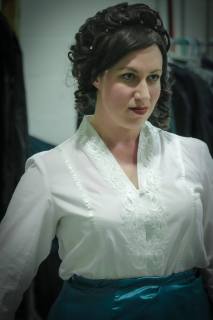October Review Challenge, #12 - "What is the most sympathetic villain you've ever written?"
This one I struggled with a bit. This was the second one suggested by my friend Jonathan, and I probably would not have considered adding it on my own.
Being the English teacher I am, I like to establish a definition for a concept before I use it. Antagonists are the figures in the story trying to prevent the protagonist from reaching their goals, but villainy I would characterize as when an antagonist has malicious intentions or is specifically supposed to be in the wrong. I frequently use non-villainous antagonists for the purpose of having conflict that’s not so cut and dried as somebody doing a good thing versus doing somebody a bad thing. It’s a great way to introduce shades of gray and complication.
However, I do love a good villain. Particularly when they’re genuinely wicked. To the point where if I want them sympathetic, I tend to keep them more toward the mere antagonist side, and if I let me them a real villain, they tend to be pretty nasty. So this makes it a little tricky to pick one who I genuinely want you to feel for.
There’s barely a villain to be had, with the exception of the intentionally broad General Hacksaw from part three, in any of the first four episodes of Dream Machine. Instead, most of the conflict there is interpersonal, between characters who are varying degrees of wrong but ultimately trying their best. Mrs. Hawking has a new villain almost every show, but most of them are supposed to be embodiments of various Victorian social ills— misogyny, class predation, systemic abuse or neglect —and so are rarely meant to be sympathized with. In Adonis, the majority of the characters are AWFUL, some to the point of being gross, to create a sense of the brutal world.
What I do frequently have is people who are responsible for some horrible act that was in some part driven by their circumstances. I frequently write about social ills, particularly ones that create negative environments that force people into terrible positions. So I do often make use of villains whose actions are not defensible, but who likely would not be forced into such desperate conditions if not for the unfairness around them. Without spoiling them, the solutions to at least two of my mysteries— Hawking IV: Base Instruments and The Tailor at Loring’s End —factors this in heavily. Even a character like Elizabeth Frost in the second Hawking trilogy, easily one of my wickedest, has to fight through the impossible position her class crushed her into, and the hugely unfair expectations placed on her as a too-young governess to a girl only five years her junior.

So of course I like making the conflict one that has more dimensions than just good-guy-versus-bad-guy. But no-villainy is a path I more often take than sympathetic-villainy.
This one I struggled with a bit. This was the second one suggested by my friend Jonathan, and I probably would not have considered adding it on my own.
Being the English teacher I am, I like to establish a definition for a concept before I use it. Antagonists are the figures in the story trying to prevent the protagonist from reaching their goals, but villainy I would characterize as when an antagonist has malicious intentions or is specifically supposed to be in the wrong. I frequently use non-villainous antagonists for the purpose of having conflict that’s not so cut and dried as somebody doing a good thing versus doing somebody a bad thing. It’s a great way to introduce shades of gray and complication.
However, I do love a good villain. Particularly when they’re genuinely wicked. To the point where if I want them sympathetic, I tend to keep them more toward the mere antagonist side, and if I let me them a real villain, they tend to be pretty nasty. So this makes it a little tricky to pick one who I genuinely want you to feel for.
There’s barely a villain to be had, with the exception of the intentionally broad General Hacksaw from part three, in any of the first four episodes of Dream Machine. Instead, most of the conflict there is interpersonal, between characters who are varying degrees of wrong but ultimately trying their best. Mrs. Hawking has a new villain almost every show, but most of them are supposed to be embodiments of various Victorian social ills— misogyny, class predation, systemic abuse or neglect —and so are rarely meant to be sympathized with. In Adonis, the majority of the characters are AWFUL, some to the point of being gross, to create a sense of the brutal world.
What I do frequently have is people who are responsible for some horrible act that was in some part driven by their circumstances. I frequently write about social ills, particularly ones that create negative environments that force people into terrible positions. So I do often make use of villains whose actions are not defensible, but who likely would not be forced into such desperate conditions if not for the unfairness around them. Without spoiling them, the solutions to at least two of my mysteries— Hawking IV: Base Instruments and The Tailor at Loring’s End —factors this in heavily. Even a character like Elizabeth Frost in the second Hawking trilogy, easily one of my wickedest, has to fight through the impossible position her class crushed her into, and the hugely unfair expectations placed on her as a too-young governess to a girl only five years her junior.

So of course I like making the conflict one that has more dimensions than just good-guy-versus-bad-guy. But no-villainy is a path I more often take than sympathetic-villainy.